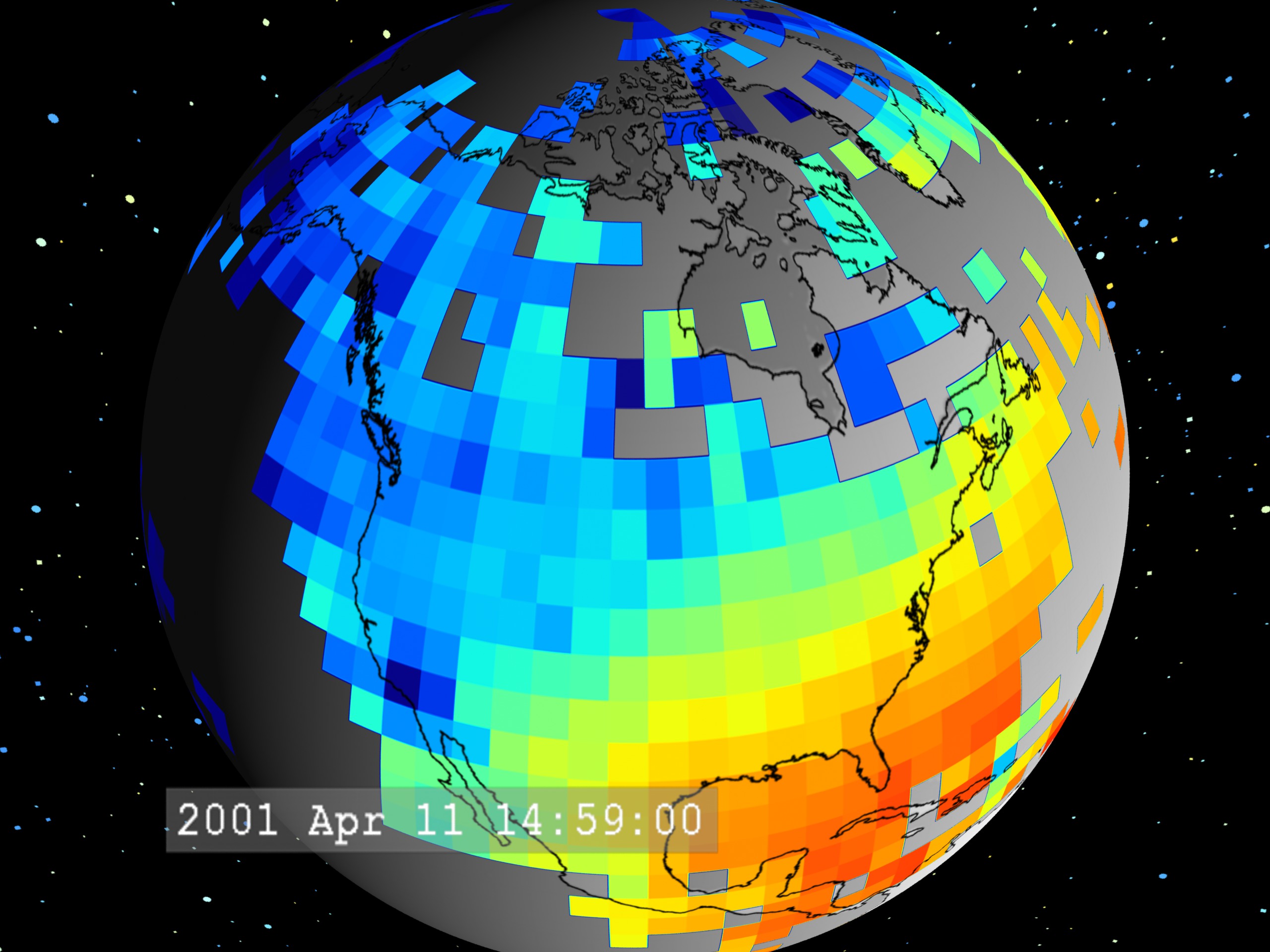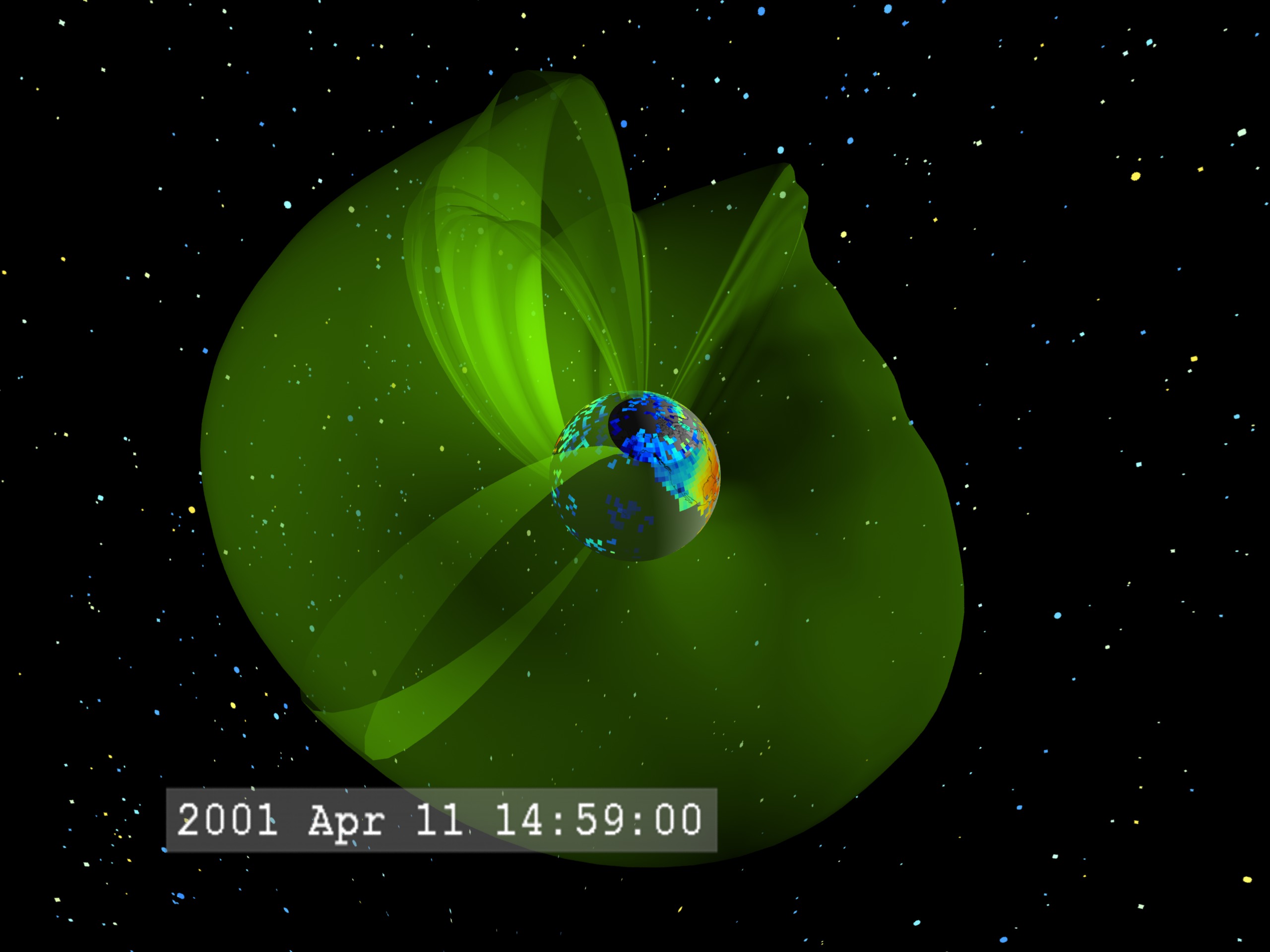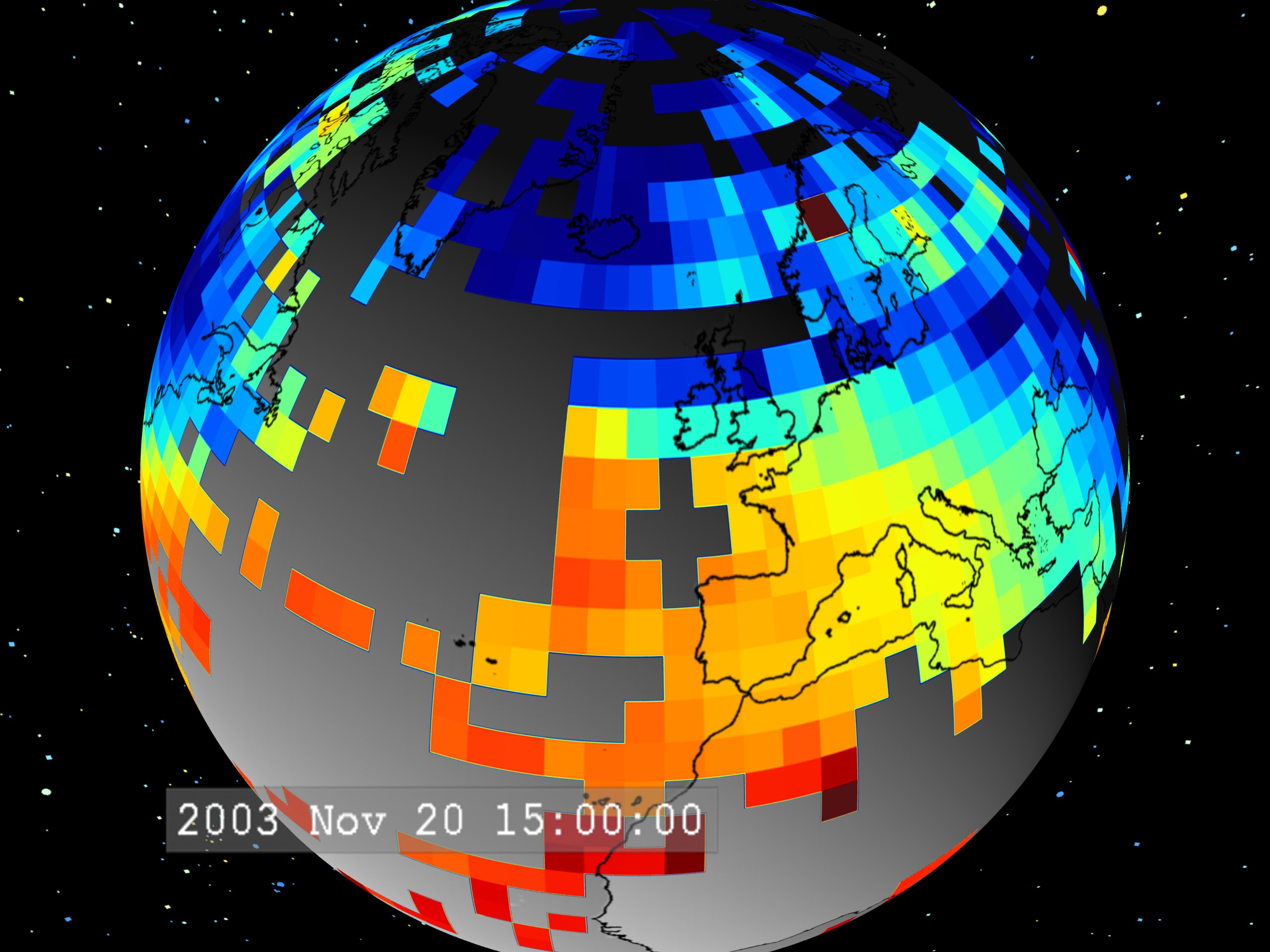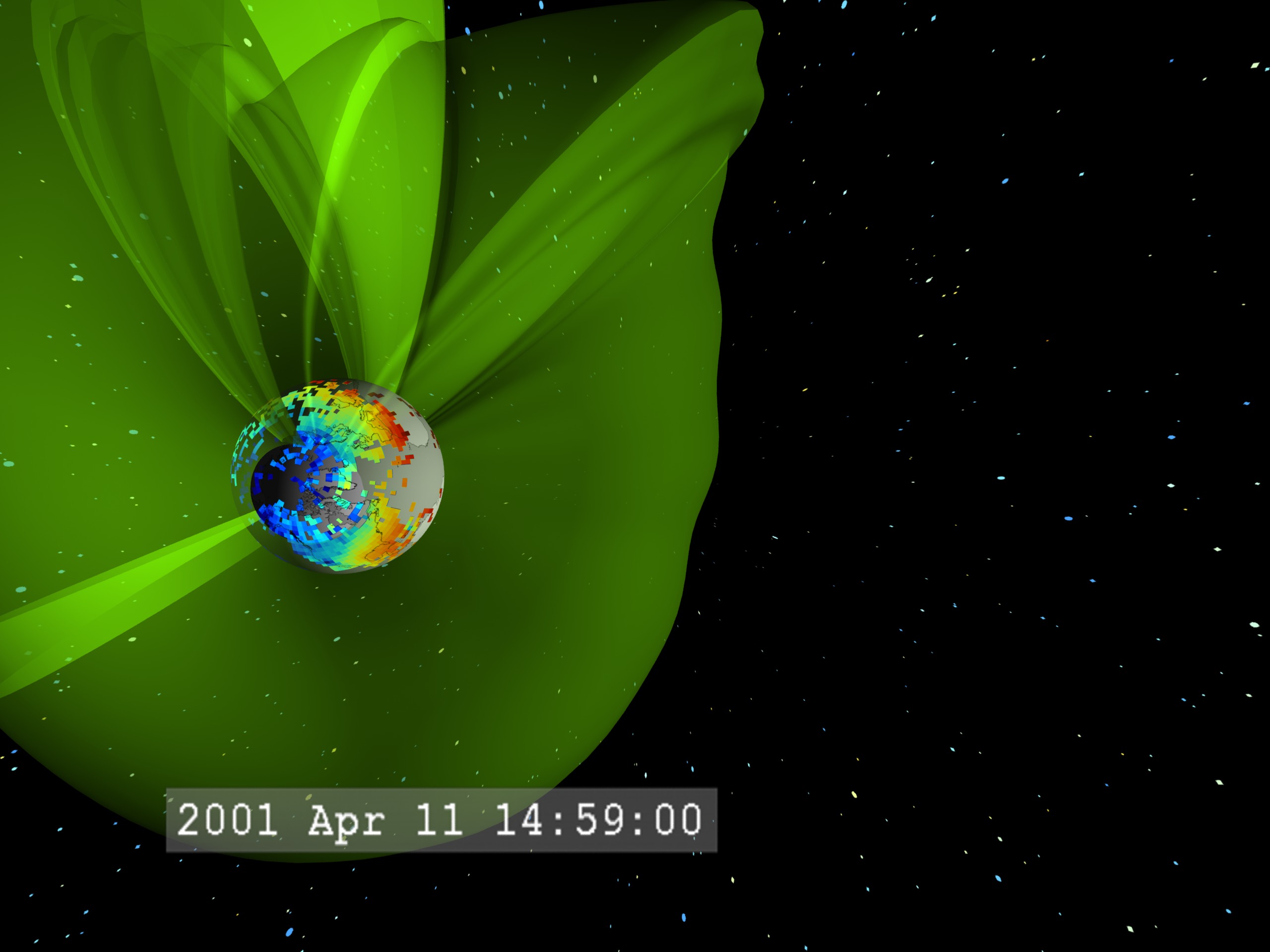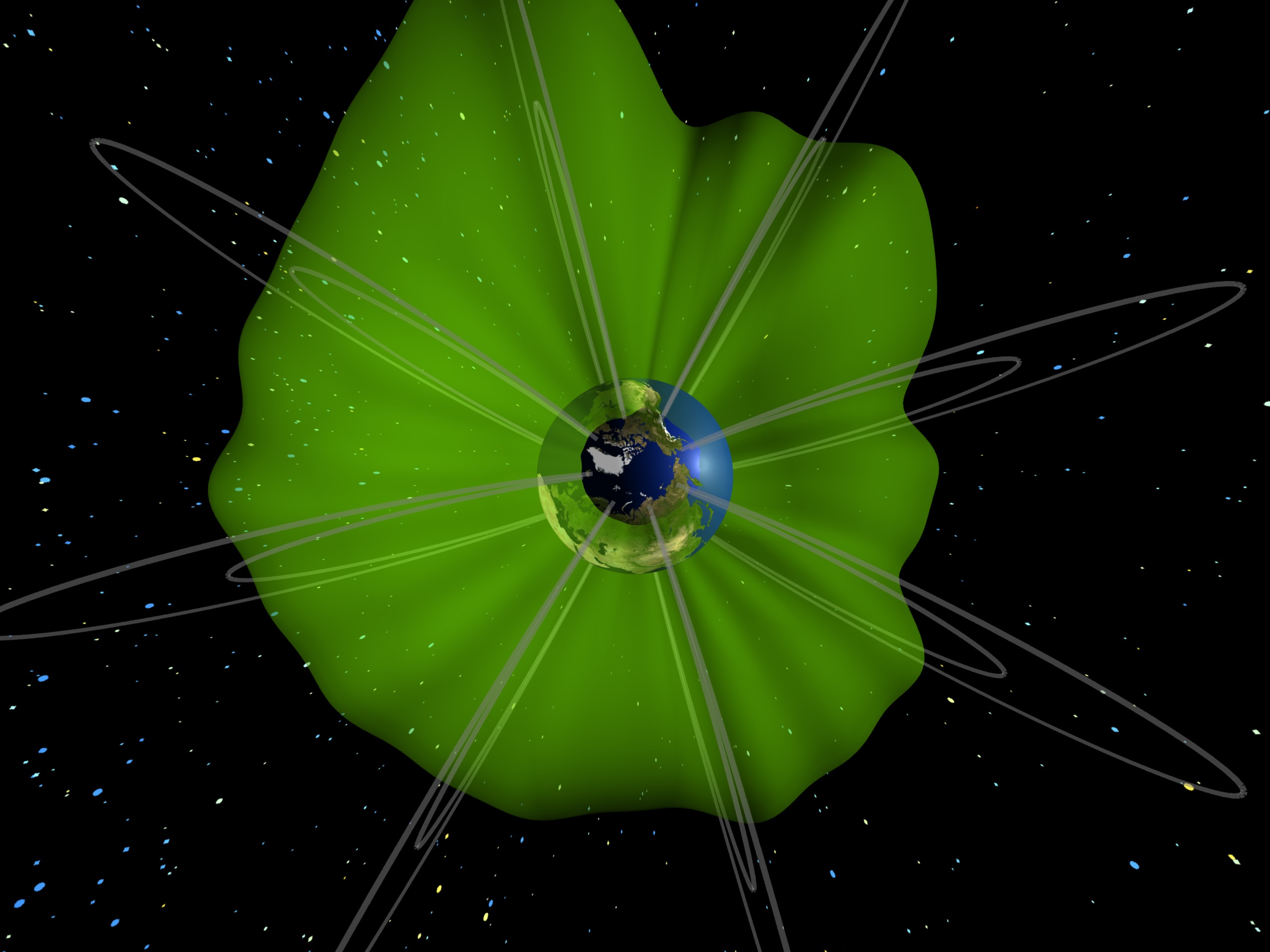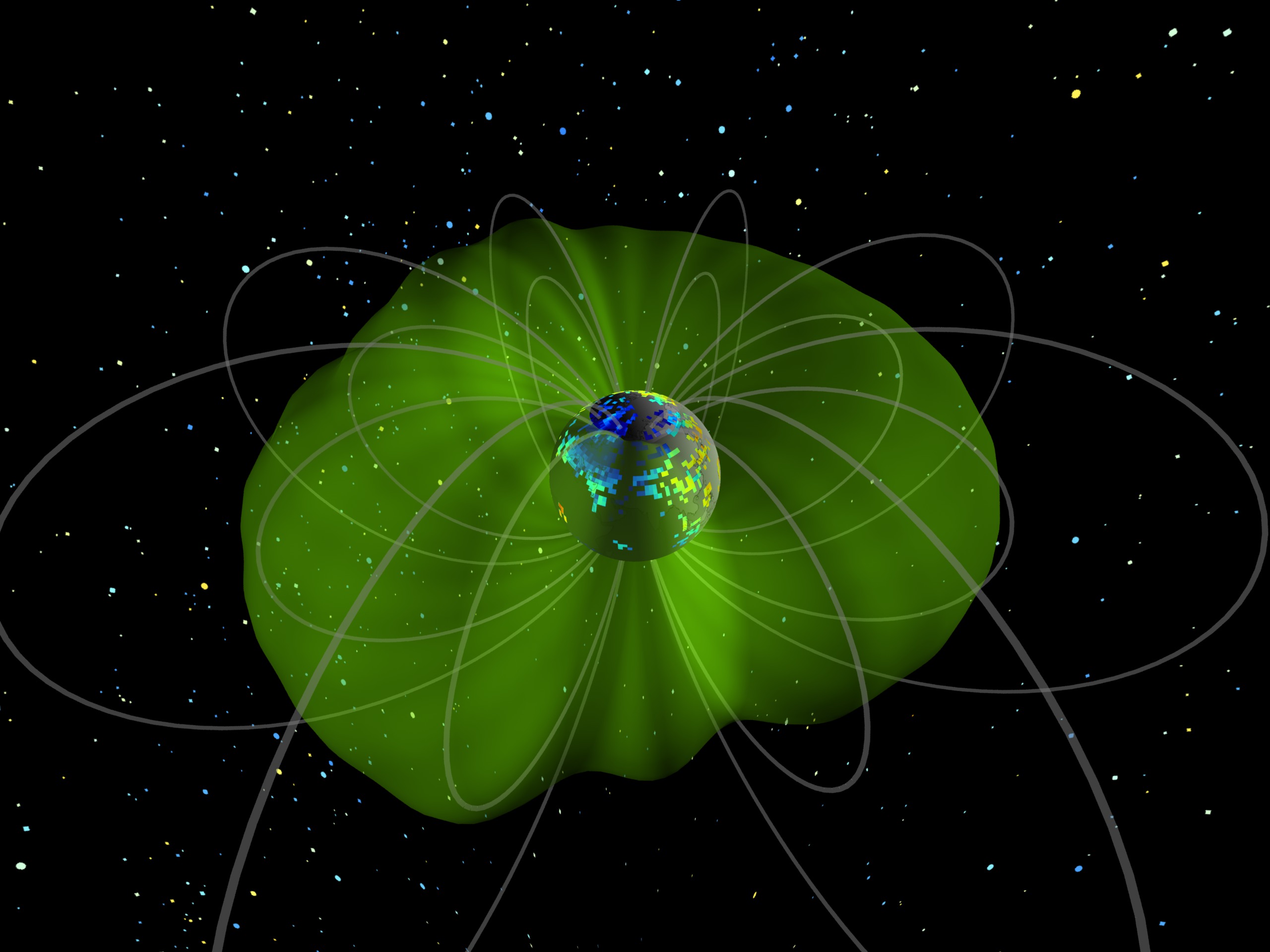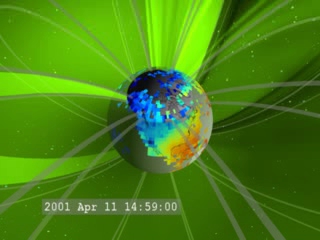Zoom-in to plasmapause-induced TEC enhancement - April 2001
Space weather events which disturb the plasmapause (displayed here as a green surface enclosing the Earth) can propagate down to the Earth's ionosphere. There they enhance the ionosphere electron content which can disrupt radio signals from satellites.
NOTE: This visualization shows the Earth's magnetic dipole field lines rotating rigidly with the Earth. Technically, this is inaccurate. Ions and electrons in the lower atmosphere can create currents which can make these lines 'drag' with Earth's rotation, but this will occur mostly near the Earth and not higher up. More details on this process can be found in the FAQ at the The Exploration of the Earth's Magnetosphere web site, Does the Earth's magnetic field rotate?.
Push-in view with time tags.
Push-in view without time tags.

An overview of the pre-storm plasmasphere.

An overview of the pre-storm plasmasphere (without dates).

Push-in to North America (no dates)

Push-in to North America.

The plasmasphere plume passes below the observer, enhancing the electron content of the ionosphere below it (no dates).

The plasmasphere plume passes below the observer, enhancing the electron content of the ionosphere below it.
For More Information
Credits
Please give credit for this item to:
NASA/Goddard Space Flight Center Scientific Visualization Studio
-
Animator
- Tom Bridgman (Global Science and Technology, Inc.)
-
Scientists
- Jerald Goldstein (SwRI)
- Marlene Colerico (MIT/Haystack)
- Anthea J. Coster (MIT/Haystack)
- Robert Robinson (NSF)
- Geoff Crowley (SwRI)
- John Foster (MIT/Haystack)
Release date
This page was originally published on Monday, December 5, 2005.
This page was last updated on Wednesday, May 3, 2023 at 1:55 PM EDT.
Missions
This page is related to the following missions:Series
This page can be found in the following series:Related papers
JOURNAL OF GEOPHYSICAL RESEARCH, VOL. 110, A09S31, doi:10.1029/2004JA010928, 2005
JOURNAL OF GEOPHYSICAL RESEARCH, VOL. 110, A09S31, doi:10.1029/2004JA010928, 2005
Datasets used
-
[IMAGE: EUV]
ID: 41 -
Total Electron Content (TEC) [NAVSTAR: World-wide GPS Receiver Network]
ID: 580This dataset can be found at: http://www.navcen.uscg.gov/GPS/geninfo/
See all pages that use this dataset
Note: While we identify the data sets used on this page, we do not store any further details, nor the data sets themselves on our site.
